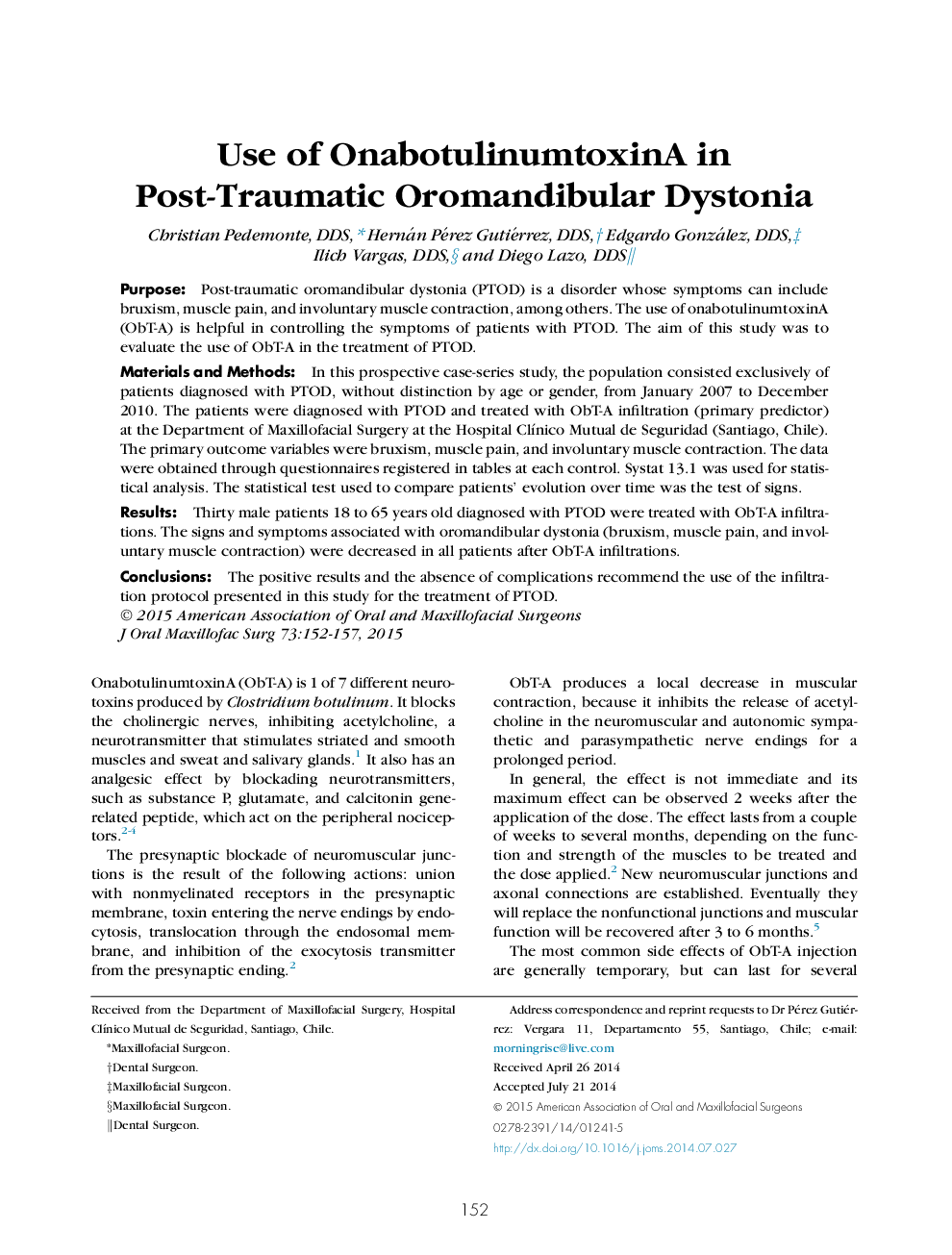| Article ID | Journal | Published Year | Pages | File Type |
|---|---|---|---|---|
| 3153292 | Journal of Oral and Maxillofacial Surgery | 2015 | 6 Pages |
PurposePost-traumatic oromandibular dystonia (PTOD) is a disorder whose symptoms can include bruxism, muscle pain, and involuntary muscle contraction, among others. The use of onabotulinumtoxinA (ObT-A) is helpful in controlling the symptoms of patients with PTOD. The aim of this study was to evaluate the use of ObT-A in the treatment of PTOD.Materials and MethodsIn this prospective case-series study, the population consisted exclusively of patients diagnosed with PTOD, without distinction by age or gender, from January 2007 to December 2010. The patients were diagnosed with PTOD and treated with ObT-A infiltration (primary predictor) at the Department of Maxillofacial Surgery at the Hospital Clínico Mutual de Seguridad (Santiago, Chile). The primary outcome variables were bruxism, muscle pain, and involuntary muscle contraction. The data were obtained through questionnaires registered in tables at each control. Systat 13.1 was used for statistical analysis. The statistical test used to compare patients' evolution over time was the test of signs.ResultsThirty male patients 18 to 65 years old diagnosed with PTOD were treated with ObT-A infiltrations. The signs and symptoms associated with oromandibular dystonia (bruxism, muscle pain, and involuntary muscle contraction) were decreased in all patients after ObT-A infiltrations.ConclusionsThe positive results and the absence of complications recommend the use of the infiltration protocol presented in this study for the treatment of PTOD.
